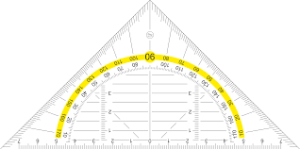Third Lesson: The Architecture of the Cosmos.
Posted by celticman on Tue, 27 Oct 2015
 In response to The Daily Post's writing prompt: "Odd Trio Redux."
In response to The Daily Post's writing prompt: "Odd Trio Redux."
Carlo Revelli (2015) Seven Brief Lessons on Physics, translated by Simon Carnell and Erica Segree.
We’ve got a floor plan. In a reductionist world two features of space and time stand together in the battle-scarred macroscopic twentieth-century theories of Einstein. He explains how the cosmos came into being and hangs together. Contrast this with the mirrored microcosm of Bohr’s theory of how elementary particles work, the flickers of the creeping subjectivity of the observer effect and creating seemingly something from nothing. We have something that undermines the mechanical movements and objectivity of classical physics, but does not undermine the beauty and grace of Einstein’s equations. It complicates what is complicated – the architecture of the cosmos. Theories, like the individuals that produced them, don’t stand still. They say prove me wrong. The sky doesn’t fall down, but we can move onto the next theory that explains why it is still above, or indeed, below us.
Rovelli in his third lesson traces the scientific visions that have gone before and the revolution in thinking that has increased our understanding of how we ‘see’ reality.
In his first box, a figure of a little man (or woman) stands like an X with the earth below him and the sky above. For millennia, thousands of years, for any man that could see, this was unquestioned reality.
Borelli tells us that Anaximander twenty-six centuries ago questioned this reality. He asked how it was possible for the sun, moon and stars to revolve around us. His answer was that the sky was not just above us, but also below us. Thus in the second box the sky takes up the four corners and the little X-man is standing on a block of earth and has his arms raised to the sky, and his counterpart, another upside-down X-man, has his arms raised to the sky.
There is uncertainty in Rovelli’s attribution of who first though of the earth as a great floating stone suspended in space, whether that honour goes to Parmenides, or Pythagoras (perhaps both and it took different cultural paths into our understanding?). Here the resultant diagram is no longer a box, but the more recognisable Ptolemaic system of circles within circles of unnamed stars and moon with the earth a shaded bullseye, and a little X-man standing on it, at the centre of the known universe.
The Copernicus revolution was the end of the Ptolemaic worldview. The earth was no longer the centre of the universe, but just one, among other planets, bigger and smaller than ours, in a diagram of a rock, with an X-man on it, circling the sun.
Here I’m going to step outside Rovelli’s high-speed chase through time and interject Galileo Galilei. The Renaissance astronomer and polymath famously was forced by the Catholic Church to recant his proofs that Copernicus was correct and to swear that the Ptolemaic worldview was the only model that worked in allowing God to put X-man at the centre of the universe and give God parental visiting rights. The mind of a visionary and the heart of a visionary may be pulling in different directions.
A contemporary comparison would be global warming. Scientist at the end of the 1960s charted the greenhouse gas effect of fossil fuel use in parts per million. The Third World War has begun with the loss of human life far more likely to be greater than the First and Second, and indeed all previous wars, combined all within two generations. A child born now will see the start, but not the end of it. But in terms of the solar system that’s not even a blink of light.
With improved instruments our measurement of the solar system has improved exponentially. The Hubble telescope which orbits the planet and allows us to see deep into space, studded with splashes of galaxies moving endlessly in time since an estimated fifteen billion years ago; the earth a small ball exploded into being with the other planets that surround it, lies not at the beginning or the end, but part of time and space.
- celticman's blog
- Log in to post comments
- 920 reads


